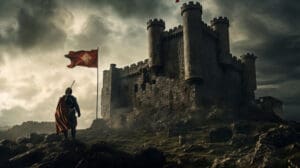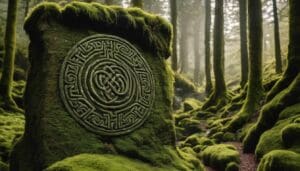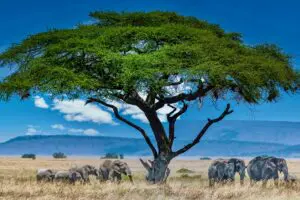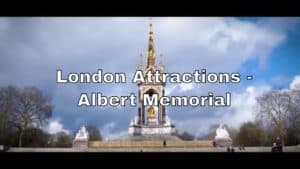Connemara’s Landscape in Lore: Exploring the Mythic Terrain Where Earth Meets Ocean
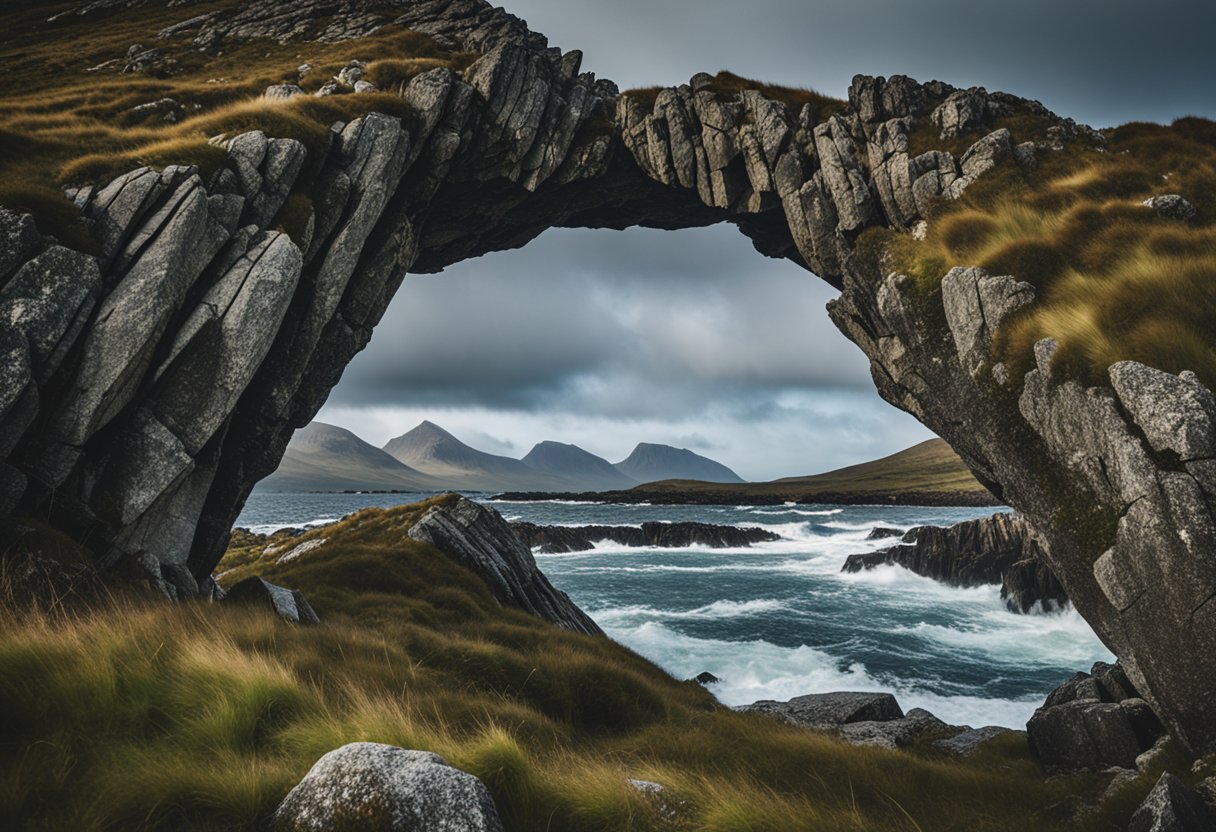
Updated On: April 15, 2024 by Aya Radwan
Nestled in the heart of County Galway, Connemara stands as a testament to the rugged beauty Ireland is famed for, with its sweeping vistas that dance between the mountains and the sea. Connemara’s landscape has shaped the physical environment and moulded the people’s tales, traditions, and spirit. The rolling hills, expansive skies, and crystalline waters hold a timeless allure, drawing us into a world where nature’s grandeur plays the principal role.
As we immerse ourselves in the rich tapestry of Connemara, we find a remarkable confluence of history, heritage, and natural wonder that invites exploration. From the geological marvels of its mountains, carved by the forces of time, to the diverse flora and fauna that adorn the landscape, the region’s natural realm is a vibrant thread in Ireland’s cultural fabric. The echoes of ancient Gaelic tradition resonate throughout the region, flourishing in the Gaeltacht areas where Irish language and customs thrive alongside the modern rhythms of life.
History and Heritage of Connemara
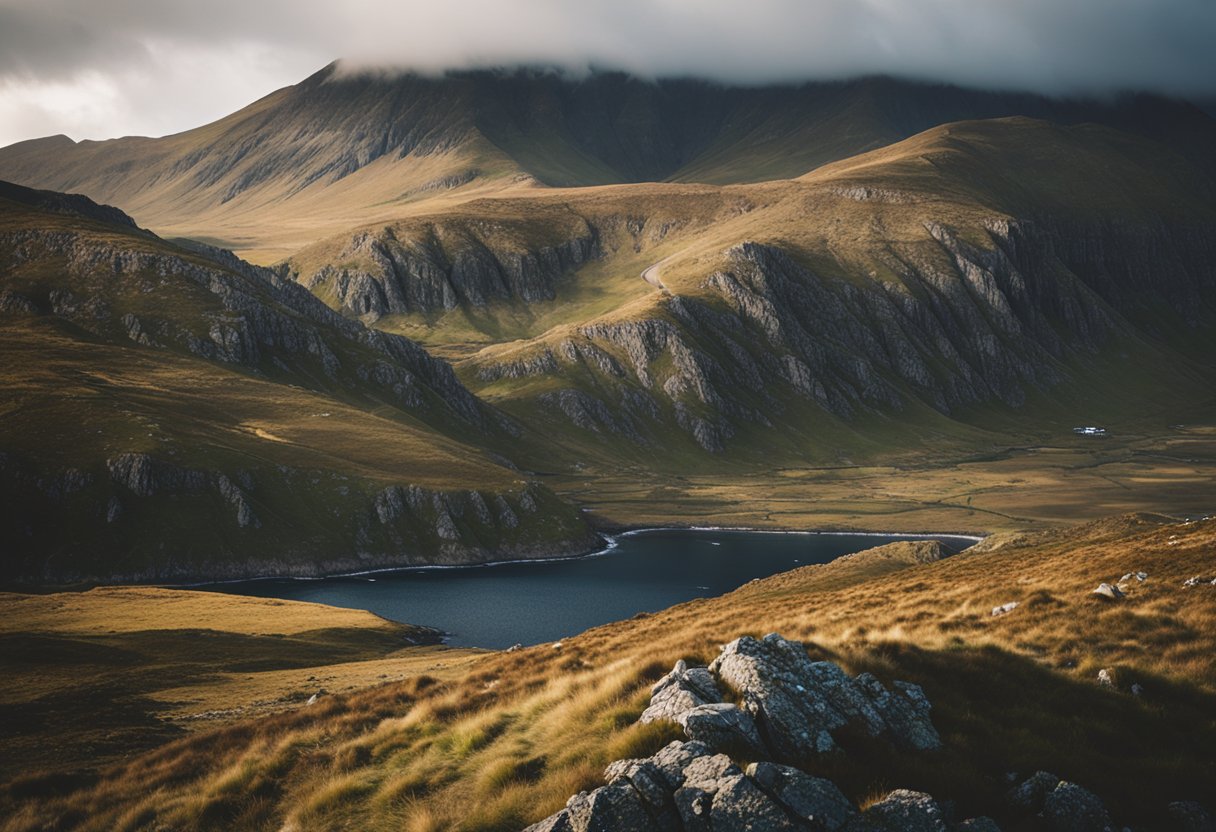
As we explore Connemara’s rich tapestry, we unfold layers of history that stretch from the desolate beauty carved by Cromwell’s legacy to the maritime sagas of Grace O’Malley. We trace a path from the mystical Neolithic era to the vibrancy of modern Irish culture.
Cromwell and the Conmhaicne Mara
Oliver Cromwell’s campaign in Ireland during the mid-17th century profoundly impacted Connemara and its surroundings. Post-Cromwellian era policies dispossessed many Irish of their lands, forcing them west into the harsher landscapes of the region. Within this rugged terrain, the Conmhaicne Mara—a local clan—navigated a life between the mountains and the sea.
Irish Icons: The Tale of Grace O’Malley
Grace O’Malley, known as Gráinne Mhaol in Irish lore, is formidable. A 16th-century pirate queen, she defied the norms of her time and commanded a fleet along the western coast. Her maritime prowess and political acumen made her a key player in Irish history, securing her legacy in the region. Connemara’s coastline, part of her once-extensive territory, still echoes tales of her battles and negotiations.
Connemara Through the Ages: Neolithic to Modern Times
Connemara has been a backdrop to human activity since the Neolithic period, evidence of which can still be seen in megalithic tombs dotting the landscape. Progressing through the Bronze Age, various artefacts highlight a rich past of trade and culture. This region has been celebrated in literature and film in the modern era, notably in John Ford’s The Quiet Man. Tim Robinson’s extensive mapping and chronicling of Connemara have further contributed to our understanding of its terrain and heritage. Today, Connemara National Park protects much of this timeless landscape, preserving not just nature but centuries of human imprint.
Connemara’s Landscape: From Mountains to Coastline
Connemara’s landscape is a testament to a dramatic geological past, telling a story that stretches back hundreds of millions of years. Our journey through its geology takes us from the majestic Twelve Bens to the astonishing coastal formations.
The Formation of the Twelve Bens
The Twelve Bens, or Na Beanna Beola, are at the heart of Connemara’s geological narrative. These rugged peaks are composed of metamorphic and igneous rocks, remnants of ancient volcanic activity. Their sharp outlines and quartzite summits, particularly noticeable on Diamond Hill, symbolise the region’s wild beauty. The high-pressure conditions in Earth’s crust transformed the sandstone base into the current quartzite giants.
Killary Fjord’s Geological Wonders
The deep, impressive Killary Fjord stands as Ireland’s only true fjord, a natural wonder carved by the powerful forces of glaciation during the last Ice Age. Its steep sides plunge into the Atlantic Ocean, where the meeting of mountains and sea creates a breathtaking landscape. Notable for its sheltered waters and surrounding hills, Killary Fjord illustrates the immense power of ice in shaping the Connemara region.
The Quartz Veins of Connemara
Woven throughout the fabric of Connemara’s terrain are veins of gleaming quartz, one of the most durable minerals in the Earth’s crust. These intricate networks of crystalline quartz have contributed aesthetically to the landscape with their sparkling presence and played an important role in the region’s geological history. This mineral has been a hallmark of the area, especially among the hikers and rock climbers who traverse the region’s rugged surfaces.
Flora and Fauna of Connemara
In the rugged landscapes of Connemara, the flora and fauna weave together a rich tapestry of biodiversity. Each habitat is abuzz with life, from the peatlands to the shores of the Atlantic.
Bogs and Heaths: A Tapestry of Life
Connemara’s bogs and heaths are a stronghold for various plant and animal species. These wetlands are carpeted with a mosaic of sphagnum moss, heathers, and unique bog plants like the insectivorous sundew. The boglands, essential for carbon sequestration, support an array of birdlife from skylarks to meadow pipits, making them vital for conservation efforts.
Marine Life along the Wild Atlantic Way
The pristine waters are teeming with marine biodiversity along the Wild Atlantic Way. Seals, dolphins, and otters are common sights, especially around the numerous inlets and bays. The rocky shores are perfect viewpoints from which to observe the abundant marine life and the avian species that rely on the Atlantic’s bounty.
The Unique Connemara Pony
Distinctive to this region, the Connemara Pony is a symbol of Irish heritage. Strong, hardy, and gentle, these ponies have adapted to the harsh landscape and are integral to Connemara’s flora and fauna scene. Their versatile nature has made them beloved by equestrians worldwide.
Natural Wonders and Scenery
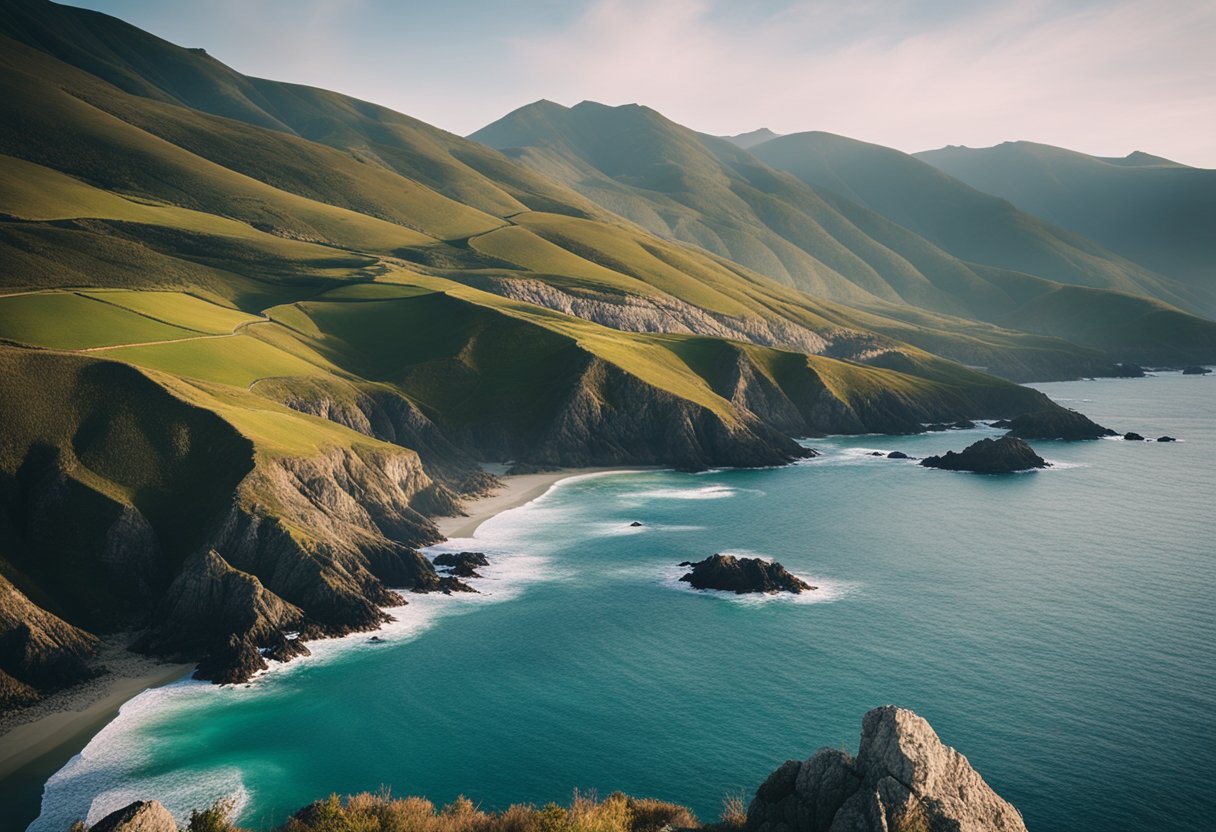
Connemara’s landscape is a tapestry of awe-inspiring natural features shaped by the raw forces of nature and the gentle touch of the sea. Here, mountains and beaches create a stunning contrast, offering glimpses of Ireland’s rugged beauty.
Mweelrea Mountain to Maumturk: Peaks of Beauty
Mweelrea, the highest peak in Connacht, rises magnificently as a beacon for hikers and admirers of untamed wilderness. Mweelrea Mountain’s slopes, part of the Maumturk Mountains, present a formidable challenge and reward adventurers with sweeping views over the Atlantic Ocean. These peaks, shrouded in legend and history, are the epitome of Ireland’s mountainous splendour and serve as a serene backdrop to the tapestry of Connemara’s landscape.
Sandy Shores: Beaches of Connemara
The beaches of Connemara are jewels scattered along the rugged coastline. Renvyle Beach captivates with its crystalline waters and panoramic sea vistas. Nearby, Glassilaun Beach beckons with powdery sands embraced by clear Atlantic waters. On the other hand, Dog’s Bay stands out with its horseshoe shape and unique sand composition, which reflects a myriad of sunlight shades, creating a warm and inviting ambience. Each beach, caressed by the Atlantic Ocean, has its character, story, and unique beauty that captures the region’s essence.
The Cultural Landscape: Gaeltacht and Tradition
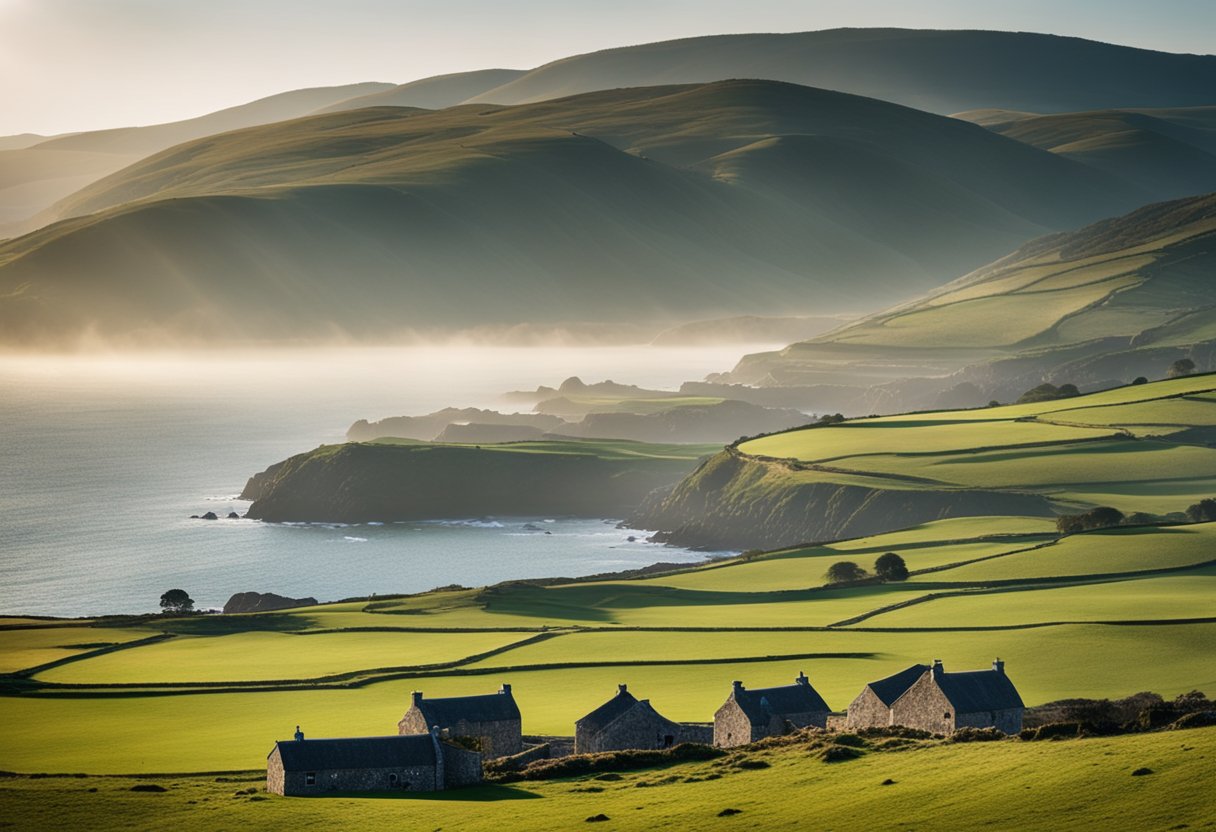
This section explores the enduring essence of the Gaeltacht. The Irish language thrives in these regions, and this area has been immortalised in literature and lore, intertwining with Ireland’s cultural beacon, Oscar Wilde.
Irish Language and Gaeltacht Regions
The Gaeltacht regions are distinguished areas in Ireland where the Irish language is predominantly spoken. Anchoring Irish culture within its landscapes, these regions comprise counties such as Donegal, Mayo, Kerry, and Connemara. Tradition isn’t merely a concept but a living practice that shapes daily life. Visitors to the Connemara Gaeltacht can immerse themselves in the richness of the Irish language, witnessing a way of life where modernity and heritage coalesce. Community initiatives ensure that the language continues to flourish, thus preserving this pivotal element of Irish identity.
Connection to Irish Literature and Lore
The raw beauty of the region’s landscape has long been a source of inspiration for Irish literature and lore, capturing the imaginations of storytellers and poets alike. Oscar Wilde once praised Connemara’s beauty, alluding to its “savage” landscape. It’s the land that breathes life into folklore and has been a muse to writers, who have encapsulated its spirit in their works. The literary connections in the Connemara landscape are not overt, yet through narrative and verse, the area’s mystical allure and cultural relevance command a compelling presence, reflecting the profound relationship between the Irish language and its native topography.
Outdoor Activities in Connemara
Connemara is a paradisiacal spot for those fond of the great outdoors, offering a plethora of activities set against the backdrop of its rugged landscape.
Hiking Trails and Mountain Walks
We’re spoilt for choice with various hiking trails, and mountain walks in region. The Connemara National Park is a prime location for hiking enthusiasts, boasting routes that cater to all skill levels. You can take a leisurely walk through the park or challenge yourself with the ascent of the Twelve Bens, which offers panoramic views of the surrounding area. Remember to dress for varied weather conditions, as the climate can shift rapidly.
- Popular Hiking Routes:
- Diamond Hill: Moderate difficulty with rewarding views.
- Twelve Bens: Suitable for seasoned hikers seeking a challenge.
Watersports: Kayaking and Fishing
Kayaking ventures in Connemara allow us to explore waterways from a unique vantage point. We can paddle through the still waters of Killary Fjord, Ireland’s only fjord, and experience peace with nature. Connemara’s rivers and lakes are abundant with fish for angling. Fishing here is not just about the catch; it’s about immersing ourselves in the serene environment.
- Kayaking Spots: Killary Fjord, Lough Corrib
- Fishing Sites: Lough Inagh, Ballynahinch River
Outdoor activities in Connemara truly embrace the allure of Irish nature. Whether by foot, bike, or boat, we’re guaranteed an unforgettable experience in the heart of the wild Gaelic West.
Architectural and Archaeological Highlights
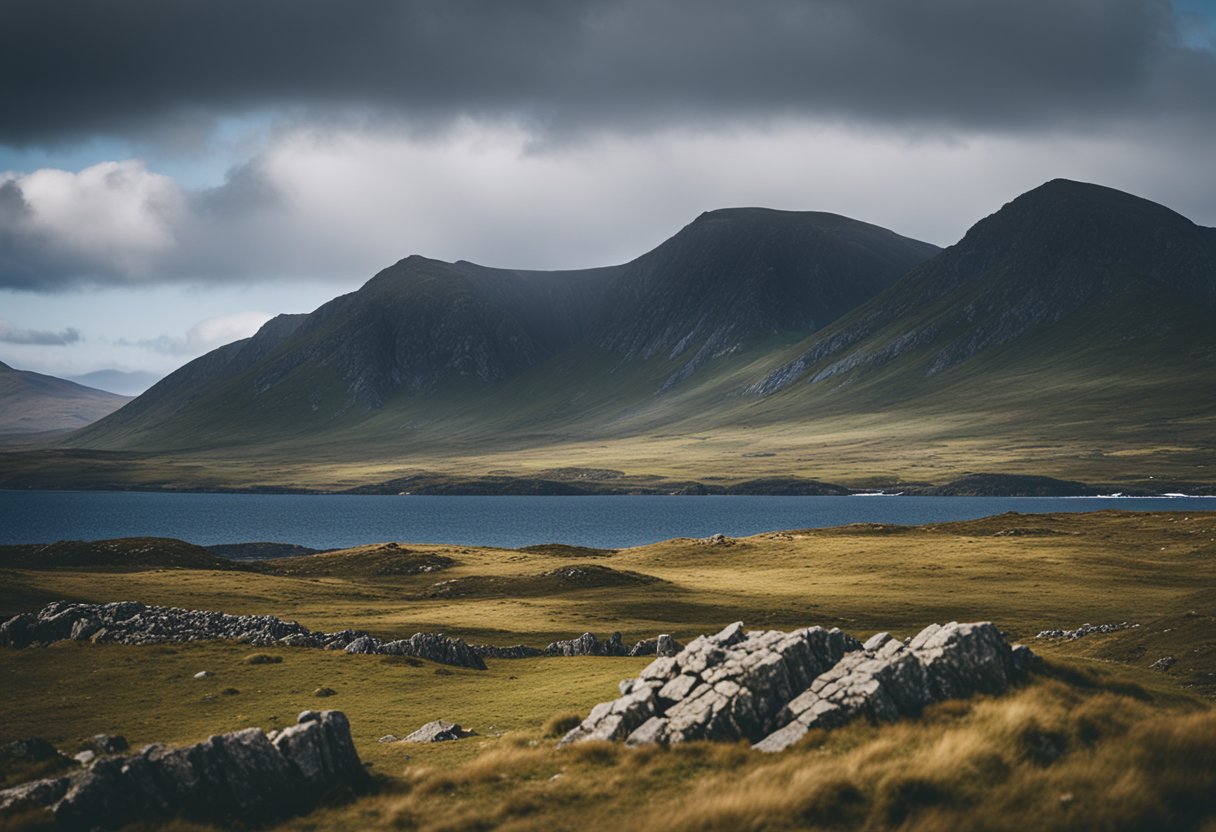
As we explore Connemara, we see its architectural and archaeological landmarks testify to its rich history and enduring legacies. From the love encapsulated within the walls of Kylemore Abbey to the Neolithic footprints etched into the landscape, these structures offer a profound glimpse into the past.
Kylemore Abbey: A Monument of Love and Devotion
Kylemore Abbey, a majestic residence built in the late 19th century, symbolises enduring love and devotion. Commissioned by Mitchell Henry for his wife Margaret in 1867, the abbey features Gothic church architecture and Victorian walled gardens. The Benedictine community took residence here in 1920, adding another layer to its storied existence.
Prehistoric Constructs: Monuments and Forts
The Connemara landscape is dotted with prehistoric monuments and forts that date back to the Neolithic era. These ancient sites, such as the marvellous court tombs, dolmens, and stone forts, speak of the ingenuity of the early Martins and other settlers who made this rugged landscape their home. Their constructions provide us with invaluable insight into our ancestors’ architectural practices and societal structures.
The Coastal Road Experience
Embarking on the coastal road in Connemara is to weave through a tapestry of maritime heritage and natural splendour. The journey promises majestic mountain vistas and the chance to visit islands steeped in time-honoured traditions.
Driving the Sky Road
The Sky Road unfurls from Clifden in a grand loop, offering a refreshing and serene drive. Just a few kilometres out, the world reveals panoramic views encompassing the Atlantic Ocean and the islands freckling its coast. We recommend pausing at the highest point, where you can grasp the true scale of Connemara’s rugged beauty — from the Twelve Bens slicing the skyline to the intricate coastline below.
Island Hopping: Inishbofin and Omey Island
The allure of Inishbofin lies a short ferry ride from the small fishing village of Cleggan. With its rich tapestry of history and pure Gaelic culture, the island is a sanctuary for walkers and nature lovers. A visit to its shores is a plunge into a simpler way of life, where the rhythms of the sea dictate the pace.
A stone’s throw away from the mainland near Claddaghduff and accessible by a tidal causeway is Omey Island. Strikingly tranquil, it offers a unique experience, especially during low tide when we can explore its ancient monastic site and rare fauna.
We chart our course back through other charming villages, like the artist’s haven of Roundstone and Errislannan Peninsula, before the journey wanes, leaving us with the salty tang of sea air and memories of a coastline that’s both etched by time and timeless in its allure.
Myth, Legend, and Folklore of Connemara
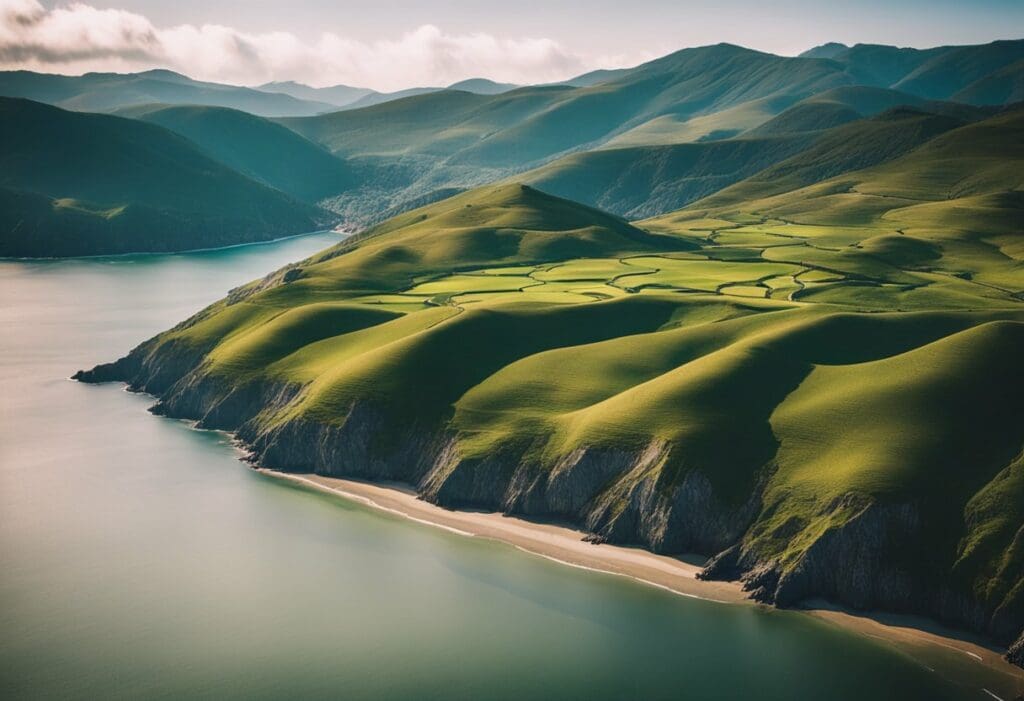
Exploring Connemara unveils a tapestry of tales woven into the landscape, from the heroic adventures of the rugged coastline to the age-old storytelling traditions echoing through the mountain valleys.
Tales of Shipwrecks and Legends
Connemara’s coast tells many a tale of bravery and tragedy. Shipwrecks, once common due to treacherous Atlantic currents, have inspired numerous local legends. For instance, the story of Alcock and Brown, the first aviators to complete a non-stop transatlantic flight, is celebrated near Clifden, where they made their historic landing.
Folklore and Storytelling Traditions
Connemara’s rich tradition of folklore thrives with each generation. Errisbeg Mountain seems to watch over the land, guarding the tales of the past. Within the region, storytelling remains a vibrant tradition, preserving the wisdom and wit of ancient times. This oral heritage provides a living connection to the landscape, with the legends and folklore shared knowing no boundary between the mountains and the sea.
Visitor Information and Tips
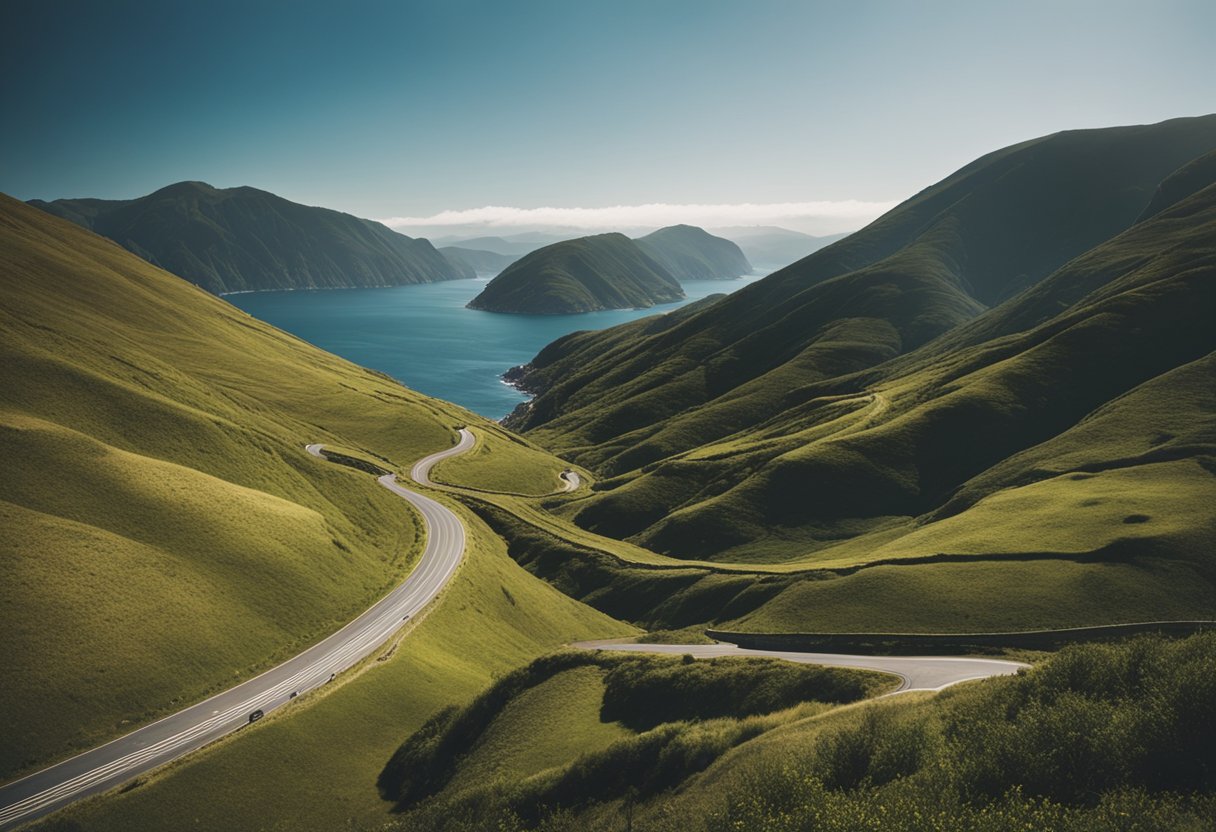
Before setting out to explore Connemara’s enchanting landscape, it is crucial to plan your visit carefully. Not only does this ensure a more enjoyable experience, but it also helps preserve the region’s natural beauty for future visitors.
Best Times to Visit Connemara
Summer is perhaps the most captivating time to tour Connemara, with longer daylight hours affording ample time for exploration. The region comes alive with vibrant flora, and the weather is generally mild, though it is always wise to carry rain gear as showers are frequent. For those seeking tranquillity away from the peak tourist season, late spring and early autumn offer a quieter yet picturesque experience.
- The ** main entrance ** to Connemara National Park is typically busier during these months, so consider arriving early in the morning to avoid crowds.
Facilities and Accessibility at Connemara National Park
Connemara National Park is well-equipped to provide a comfortable visit. A car park, picnic area, and information centre are near the main entrance. The park offers various trails for all fitness levels, including the accessible ** Ellis Wood Nature Trail **, perfect for a leisurely walk amongst the woodlands.
- The park operates year-round, with the visitor centre open seasonally. Admittance is free, ensuring that everyone has the opportunity to bask in Connemara’s natural splendour.
Remember, staying informed about the locale and services available will greatly enhance your experience of Connemara’s majestic wilderness.
Frequently Asked Questions
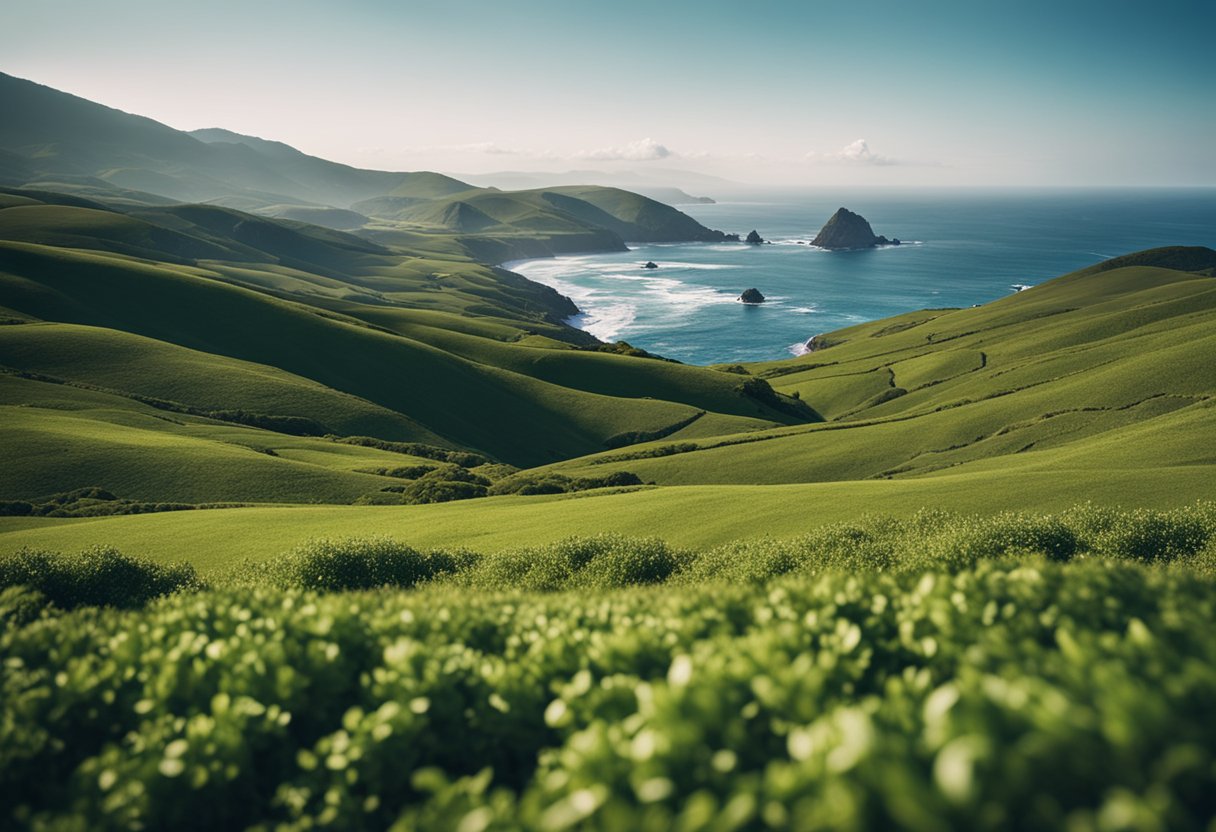
This section addresses some of the most common inquiries about the Connemara region, touching upon its natural landscape, historical significance, and cultural lore.
What geographical features define the Connemara landscape?
Connemara is characterised by various geographical features, including rugged mountains such as the Twelve Bens, expansive bogs, and a dramatic coastline that fronts the Atlantic Ocean. The landscape is a patchwork of contrasting terrains that range from heath-covered hills to lush grasslands and woodlands.
Which historical events have shaped Connemara’s past?
The history of Connemara has been shaped by numerous events, from the arrival of early settlers to the Great Famine and to land agitations in the 19th century. These historical moments have left an indelible mark on the region, influencing its population patterns, architecture, and land use.
What legendary figures and tales are associated with Connemara?
Connemara’s lore is replete with tales of legendary figures such as giants, as suggested by stories of great big bones displayed on church walls. The landscape is steeped in mythology and ancient origins, with evenings in Connemara often bringing stories that echo from a distant past.
What is the etymology behind the name ‘Connemara’?
The name ‘Connemara’ is derived from the Irish ‘Conamara’, which is believed to mean ‘Inlets of the Sea’, a reference to the deeply indented and rugged shoreline that characterises the region’s western coast.
What are the prominent towns and villages within Connemara?
Notable towns and villages within Connemara include Clifden, often called the ‘Capital of Connemara’, the picturesque fishing village of Roundstone, and Letterfrack, an important centre for education and conservation.
How does the local terrain of Connemara influence its climate and ecology?
Connemara’s terrain, with its mountains and proximity to the Atlantic, contributes to a mild oceanic climate that supports a diverse range of flora and fauna. The mountains often act as rain barriers, while the bogs and wetlands create unique habitats for various species.


